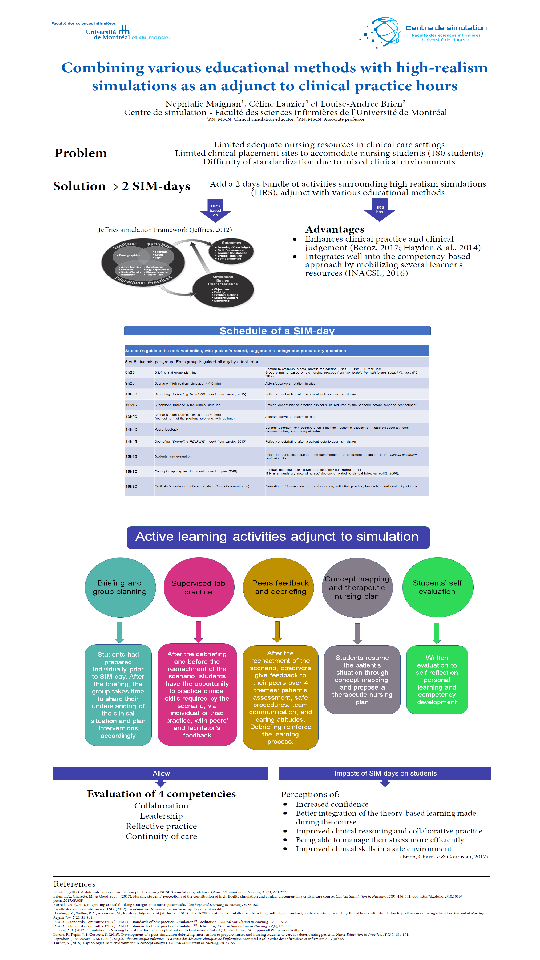Abstract
Context: With increasingly limited clinical sites to accommodate nursing students, simulations are more and more perceived as a decent enough alternative to traditional clinical experiences. Recent studies significantly show that simulation practice enhances the student’s ability to apply his learned skills to the clinical practice and ease clinical judgement (Beroz, 2017; Hayden, 2014). This poster will present the design of activities surrounding the combining of various educational methods with high-fidelity simulations within practical training in critical care for undergraduate nursing students.
Objective: As high-fidelity simulation promotes learning in action and enhances critical thinking, it also allows the student to experience situations similar to professional practice. As a summative part of the clinical placement evaluation, these high-fidelity simulations combined with other educational methods enable the assessment of 4 competencies, namely collaboration, reflective practice, leadership and communication.
Description/overview: A 2-days bundle of activities was designed around high-fidelity simulations in order to complement in-hospital clinical experiences. Pre-briefing included individual student preparation and a guided group preparation. Scenarios were re-enacted the same day after a structured debriefing and a supervised lab-session. Other active learning activities such as peer-learning, self-assessment, elaboration of a nursing care plan and concept-mapping enhanced the learning experience throughout the day. Simulations were developed following the NLN/Jeffries Simulation Framework (2012).
Impacts: The students expressed that the bundle of educational activities allowed them to integrate the theory-based learning they made during the course. Improved clinical reasoning and collaborative practices were strong emerging themes. Even if some students reported the day to be tiresome, many suggested to include more days of high-fidelity simulations with the same design in clinical placements. Students mentioned that being exposed to critical care situations in which they can intervene autonomously boosted their professional self-confidence, which they felt, could be reinvested in their clinical practice. The supervised lab-session between simulations was identified as a useful resource to improve technical skills, allowing enhancement of clinical reasoning during the 2nd simulation.





